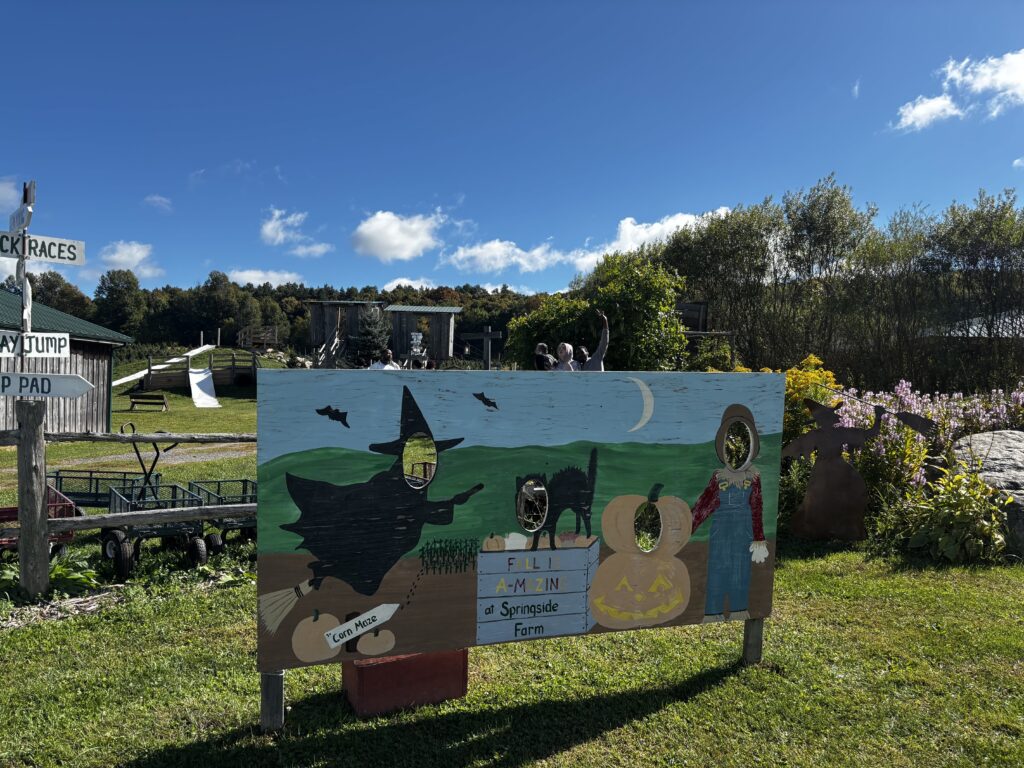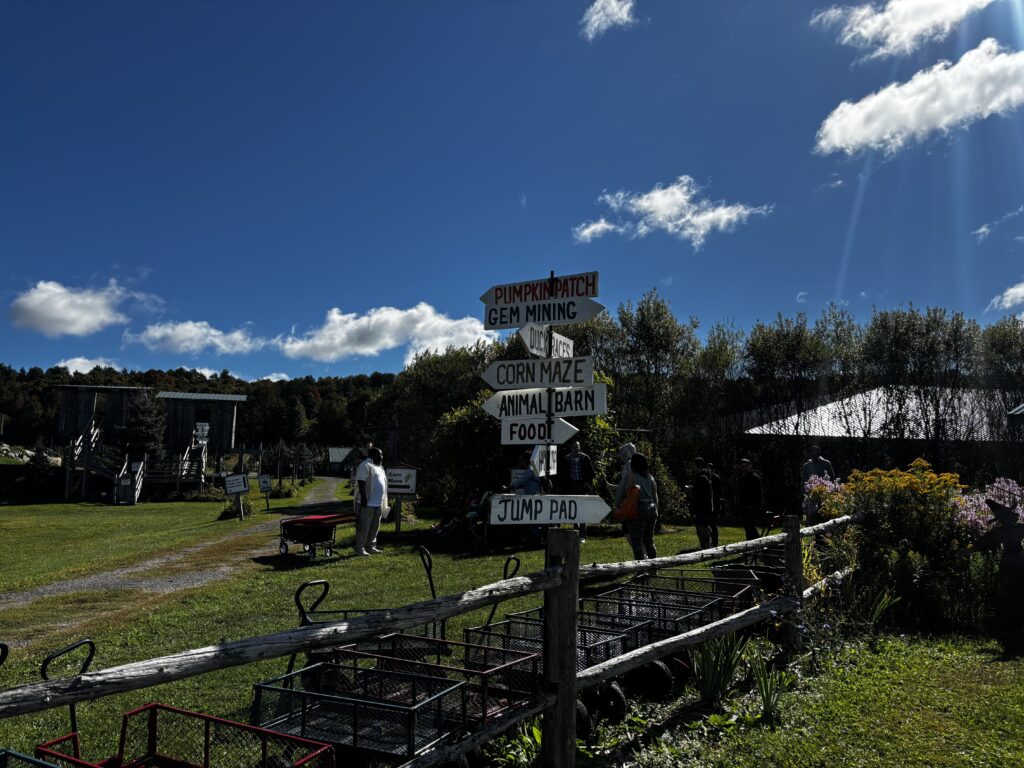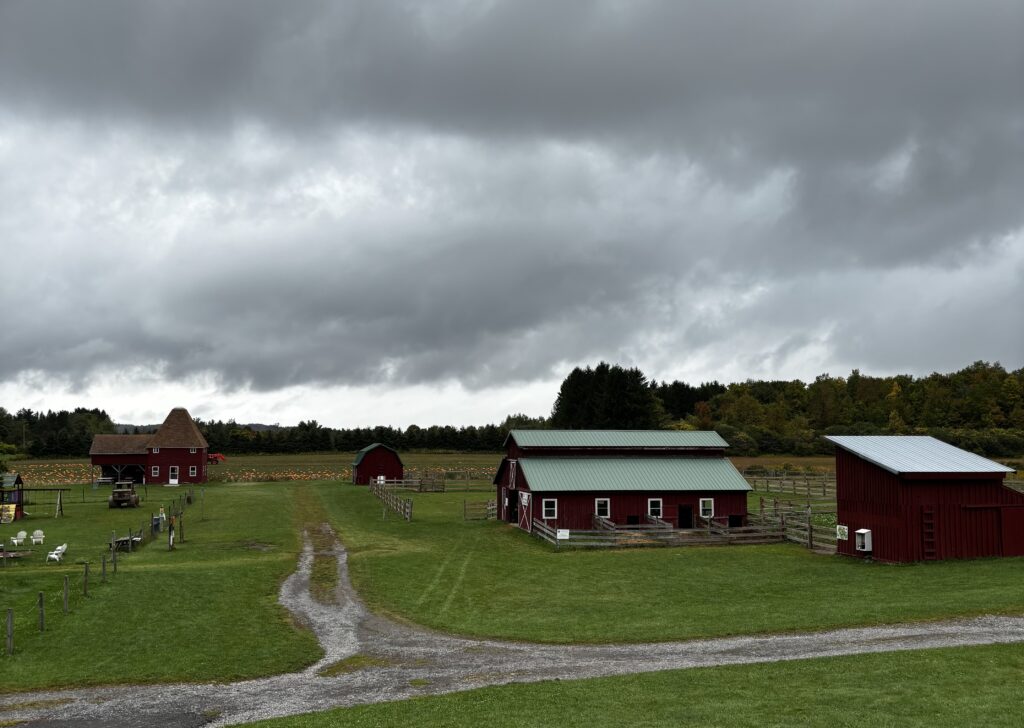VIDEO TRANSCRIPT: Harvest on the edge: Climate & economic pressures affecting the future of local fall festivals
Springside Farm co-owner Paulie Drexler: It’s a circus. I call this the carnival time.
Reporter Hunter Caparelli: Central New York farmers are facing numerous challenges for their 2025 fall harvest. Springside Farm co-owner Paulie Drexler says climate change is apparent.
Paulie Drexler: We are still in a drought. Anybody who’s not growing an annual crop will tell you, that the climate has changed, and not for the better.
Caparelli: Fall festivals for a majority of local farms are the only way to survive the winter without selling land or reducing production.
Critz Farms co-owner Matthew Critz: This season is probably 50-60% of our revenue for the whole year.
Caparelli: Equipment repairs, labor and even hay bales are getting more expensive. Critz Farms co-owner Matthew Critz says operating costs are rising.
Critz: The pallets have gone up, fertilizer’s gone up, fungicides gone up, labor’s gone up, everything’s gone up.
Caparelli: Paulie’s son Travis Drexler says labor is their number one economic pressure.
Springside Farm employee Travis Drexler: Any farm, no matter what you’re doing, any ag-industry is struggling to find domestic labor.
Caparelli: In order to survive climate impacts and economic pressures, Springside is one of many farms that’s innovating by using greenhouses to extend the season, as well as growing more cold-hardy vegetables.
Paulie Drexler: That was a no-brainer. It also keeps the UV-light off of the elements, which increases their lifespan.
Caparelli: Critz says they’ve adapted by using technology to prepare for rain droughts or heavy snow ahead of time.
Critz: Got to look at the weather first, the weather for the week, the weather for the day and try to adapt and use the crew most efficiently.
Caparelli: Relying on fall festivals to grow revenue, in Paulie’s opinion, begins with farms investing in the community.
Paulie Drexler: We’re trying to create a safe-space for families.
Caparelli: CNN found the climatic cycle involving drought, heat and wildfires cost U.S. crop producers $11 billion just last year. Reporting in Onondaga County, Hunter Caparelli, NCC News.

SYRACUSE, N.Y. (NCC News) — For farmers across Central New York, the fall harvest festival events are no longer just about cider and corn mazes. Instead, it’s about survival in the face of climate change and escalating expenses.
Fall harvest festivals are cultural celebrations of agricultural abundance held around the time of the main crop harvest in a region, usually featuring apple and pumpkin picking, wagon rides, music and corn mazes.
Research shows there are various rising pressures for local farms including climate impacts — shorter growing seasons, late frosts wiping out blossoms — and economic pressures such as higher labor costs, equipment repairs, and crop insurance, according to the New York State Climate Impacts Assessment. For many farmers in Central New York, fall harvest events are the only way to survive the winter season without selling land or scaling into industrial agriculture.
“We are still in a drought,” said Paulie Drexler, co-owner of Springside Farm in Fabius-Pompey, NY. “Those of us with long-term crops — Christmas trees, berries, apples, grapes — anybody who’s not growing an annual crop will tell you, that the climate has changed, and not for the better.”
Average fertilizer and fuel input costs for Central New York farmers has risen significantly over the past decade as well, according to the NYS Climate Impacts Assessment.
Another local farmer, Critz Farms co-owner Matthew Critz, said rising costs impact are felt in every aspect of his business.
“The pallets have gone up,” said Critz. “Fertilizer’s gone up, fungicides gone up, labor’s gone up, everything’s gone up.”
An analysis study done by the American Farm Bureau Federation (AFBF) last year found the climatic cycle involving drought, heat and wildfires cost U.S. crop producers $11 billion in 2024.
Paulie’s son Travis Drexler who has worked on the farm since he was a kid, said the rising cost for labor is their biggest economic challenge.
“Labor is definitely an on-going issue,” said Travis. “I think any farm, no matter what you’re doing, any agricultural industry is struggling to find domestic labor.”

In order to combat climate impacts and economic pressures, Springside is one of many Central New York farms that’s innovating and adapting by using greenhouses to extend the season, as well as grow more cold-hardy vegetables and more diversification into specialty fruits.
“We knew they wanted more stuff under cover, so that was a no-brainer,” said Paulie. “It also keeps the UV-light off of the elements, which increases their lifespan.”
Critz said they have adapted by preparing for rain droughts or heavy snow further ahead of time than they normally would.
“Got to look at the weather first,” said Critz. “The weather for the week, the weather for the day and try to adapt and use the crew most efficiently.”
Pauile and her staff are testing a sustainable farm strategy that uses a combination of biological, cultural and physical tools to manage crop pests effectively, while minimizing environmental risks and costs.
“Something new we’ve tried is integrated press management on a limited bases,” said Paulie. “We’ve tried encouraging beneficial insects and stay as far away from chemical solutions… I don’t want to have to go nuclear with uncontrolled pesticide chemicals that take out everything.”
The Fall of the Farm harvest festival at Springside, and the Fall Harvest Celebration at Critz Farms, both began on Saturday, Sept. 13, and both plan on running through Saturday, Oct. 26. Activities at the Springside festival include a barrel train, pedal cars, zip lines, petting zoo, basketball wagon and a pumpkin picking patch, whereas Crtiz Farms is offering a “pirate ship” corn maze, farm aniamls area, tap room and apple cider-making and apple and pumpkin picking.

© 2025 Hunter Caparelli
